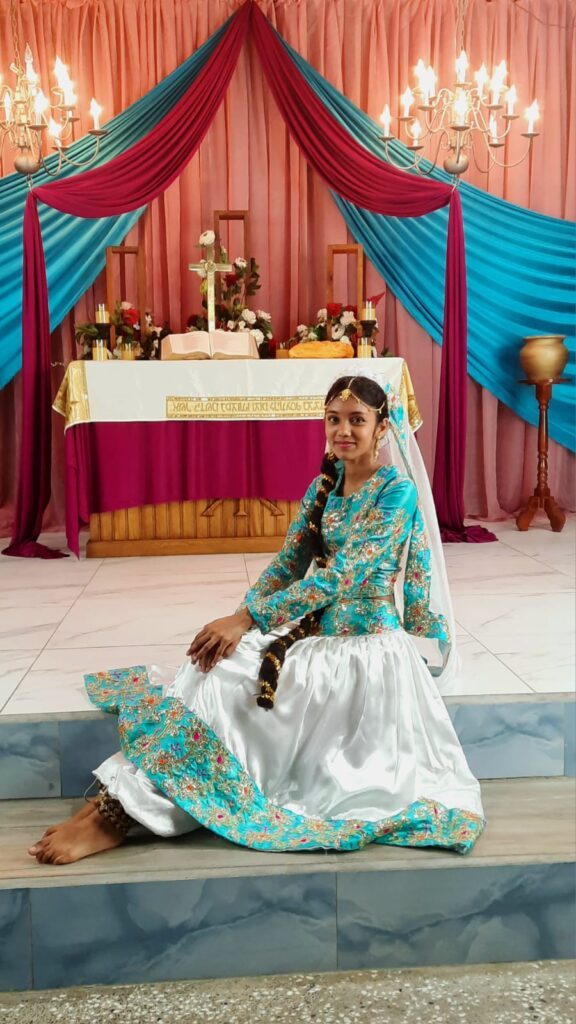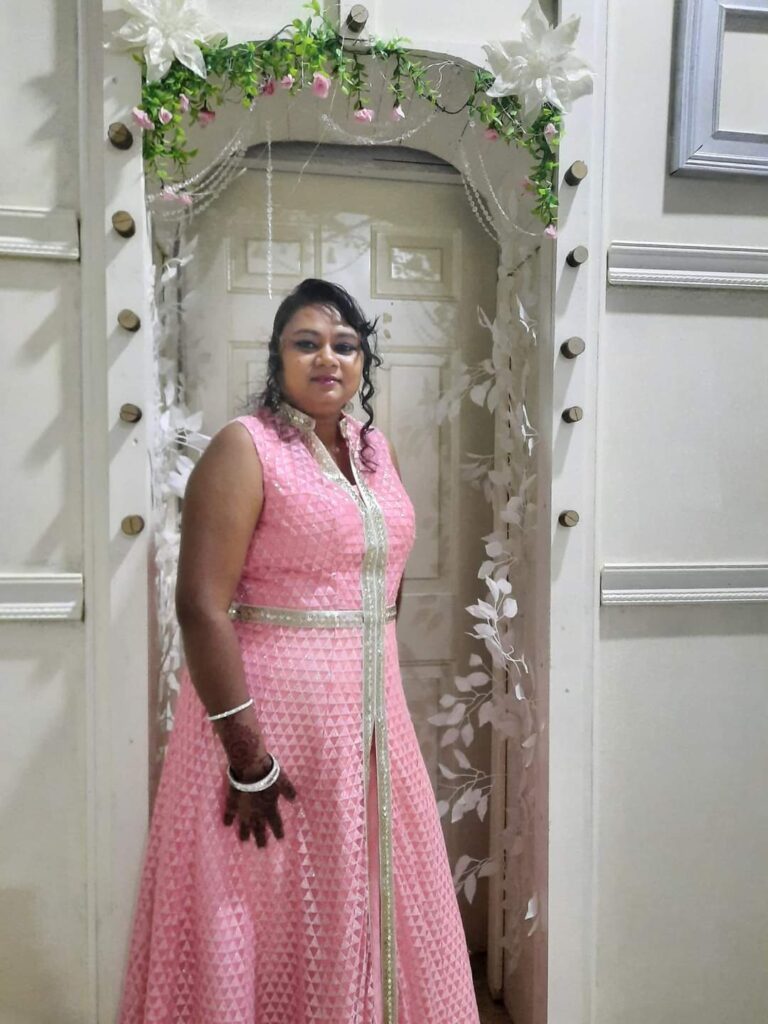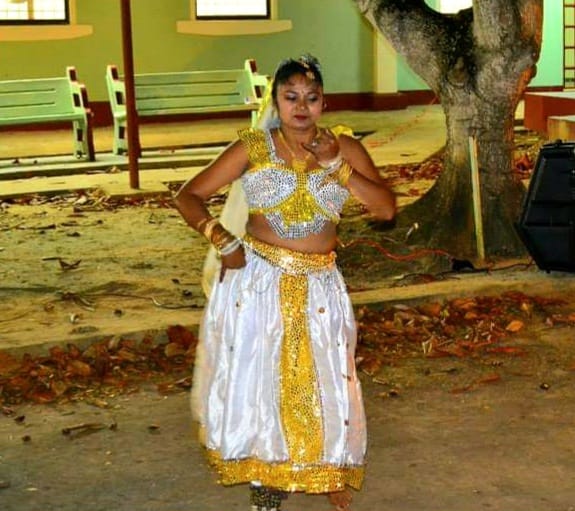Indian Heritage Month: Mom, daughter celebrate dance heritage

BAVINA SOOKDEO
“Being able to promote and contribute to the preservation of Indian culture through dance, fills me with a profound sense of honour to play a part in sharing the richness and beauty of Indian traditions with others,” says dancer Simran Sohan.
Simran and her mother, Reshma, also a dancer, spoke to the Newsday about their dedication, cultural pride and deep-rooted passion for the art of Indian dance.
Simran, 20, from Siparia, has been been dancing since childhood. Growing up with her mother as her dance teacher, almost as soon as she could walk, she began dancing. She recalls being carried to her mother’s classes and trying to mimic the movements, instinctively drawn to the rhythms.
“As I grew older, my playful attempts at dance evolved into a more serious pursuit. I naturally transitioned into becoming one of my mother’s students, eager to learn and absorb everything I could about this beautiful artform,” she said.
Her first stage performance at six marked the beginning of her dance journey. Simran was captivated by the fusion of culture and her mother’s teachings, inspiring her to pursue dance seriously.
The experience and excitement of dressing up in the beautiful costumes further inspired this student who is also is doing a degree in psychology at the College of Science, Technology and Applied Arts of Trinidad and Tobago (COSTAATT).
She specialises in three distinct styles of Indian dance: film, folk (specifically garba), and semi-classical. She said each style holds a special place in Indian culture, telling stories, celebrating traditions, and expressing the beauty and diversity of heritage. Film dance, vibrant and energetic, is a staple of Bollywood.

Garba, originating from Gujarat, is joyful and celebratory, while semi-classical dance combines elements of classical, folk, and contemporary forms, allowing for artistic expression that bridges tradition and innovation.
Reshma, 46, has been a dance teacher for over 30 years and a dancer for 36 years.
She began teaching at a friend’s home in Rock Road, Penal and went on to open Reshma’s School of Dance in Charlo Village, Penal, and other locations. Her students have participated in numerous competitions and performances, showcasing their talent at the Divali Nagar and Indian Arrival celebrations.
Reshma’s dance tutor was Devika Siewsankar of the Saraswati Vandana Dance Group, Debe, who taught her Bollywood, semi-classical and folk dance.
Dr Ashook Chakravartee from India, a teacher at the Gandhi Institute of Indian Culture, also taught her kathak.
The bond between Reshma and Simran intertwines the roles of teacher, mentor, and parent, allowing for personalised and effective instruction. This dynamic has created a strong sense of trust and comfort, enabling Simram to explore and express herself artistically without fear of judgment. A devout Presbyterians, they see dance as honouring their cultural heritage.
“Being a Presbyterian and practising Indian dance involves a blend of respect, adaptation, and personal interpretation, Simran said.
“As a Presbyterian Indian, it involves understanding Indian dance as a cultural art form, focusing on its technical aspects, historical significance, and storytelling elements of the dance.
“It’s more about honouring one’s heritage whilst staying true to personal beliefs.
“This balance allows for the participation of Indian dance, while maintaining my Presbyterian faith and values.”
She said she views Indian dance as a universal form of human creativity and expression.
“Dance transcends cultural boundaries and speaks to the shared human experience. Regardless of religious affiliation or cultural background, the act of dancing is a universal language that communicates emotions, tells stories, and fosters connections.
“Because of my family dynamics, with my mom having grown up learning Indian dance and with my dad being supportive and encouraging me to pursue Indian dance as a form of a hobby, along with the Presbyterian church history has aided in creating an open and welcoming environment to pursue my adoration for Indian dance, creating a balance of being a Presbyterian and practising Indian dance.”

As Indian dancers, mother and daughter face several challenges. One significant issue is the prevalence of stereotypes and misconceptions surrounding Indian dance, often seen as provocative or sexualised. The mother-daughter team also added that globalisation and modernisation threaten the authenticity of traditional Indian dance forms.
“In a rapidly changing cultural landscape, there is pressure to adapt performances to suit contemporary tastes, potentially diluting the essence and purity of our art forms. This struggle to balance tradition with innovation can compromise the integrity of our practice and erode the cultural heritage we seek to preserve,” said Simran.
“Furthermore, cultural appropriation poses a significant challenge for Indian dancers in Trinidad and Tobago. Our dance forms are sometimes borrowed or misrepresented without proper understanding or respect for their cultural significance. This appropriation not only diminishes the value of our art but also perpetuates harmful stereotypes and misconceptions about Indian culture.”
She also noted that male dancers face prejudice and judgment, making it difficult for them to follow their passion without fear of ridicule. Despite these challenges, they actively contribute to promoting and preserving Indian culture through dance and they offer dance classes to.

As Indian Heritage Month is celebrated, Simran encourages everyone to embrace and celebrate the vibrant traditions, stories, dances, music, and flavours that enrich their lives. She hopes for a future where Indian dance continues to evolve, blending modern elements with its rich legacy while preserving its core principles.
Reshma intends to carry on teaching Indian dance, making it accessible, to anyone who wishes to learn and creating an open and inviting environment, while Simran plans to deepen her practice and continue improving.
“Through dedicated practice and performances, I aim to uphold and represent the art of Indian dance to the best of my abilities. Through my future dancing endeavours I aim to continue contributing to the cultural landscape by sharing and showcasing the nuances and beauty of Indian dance wherever possible.”
Reshma said she feels proud of passing on this tradition to her daughter.
“Words cannot express how happy I am to see my daughter continuing in my footsteps. I am very happy and proud that I can pass on my knowledge of this cultural art form of dance to her, and seeing her interest and willingness to learn and continue makes me very happy.”

Comments
"Indian Heritage Month: Mom, daughter celebrate dance heritage"